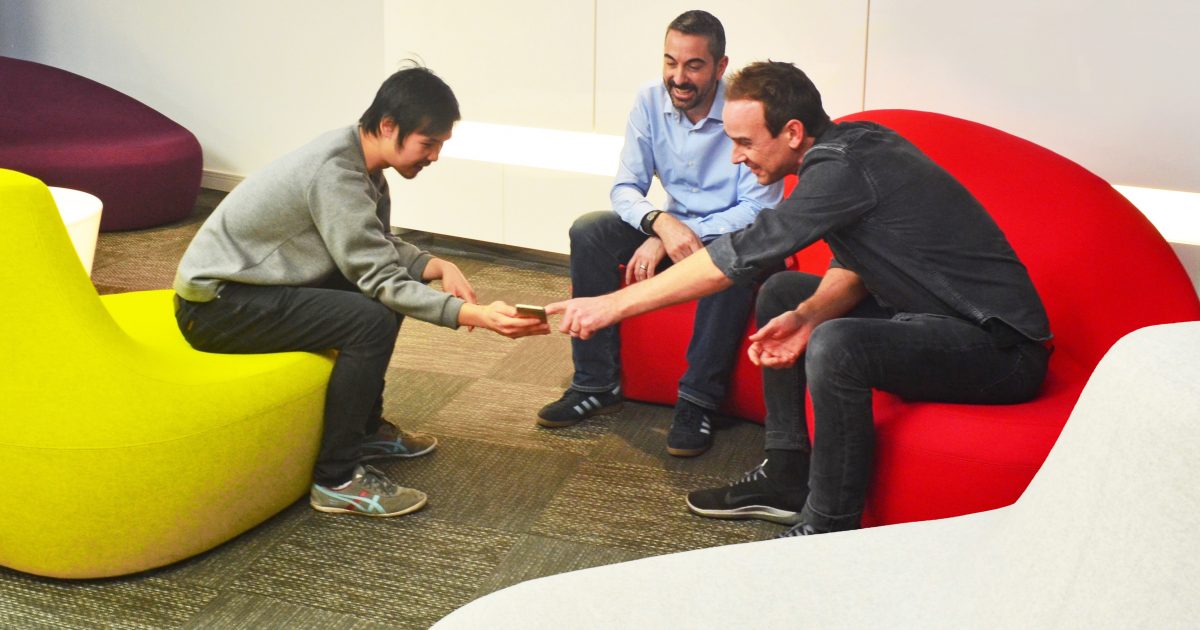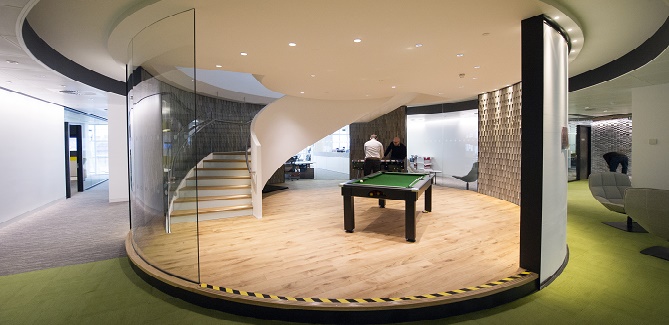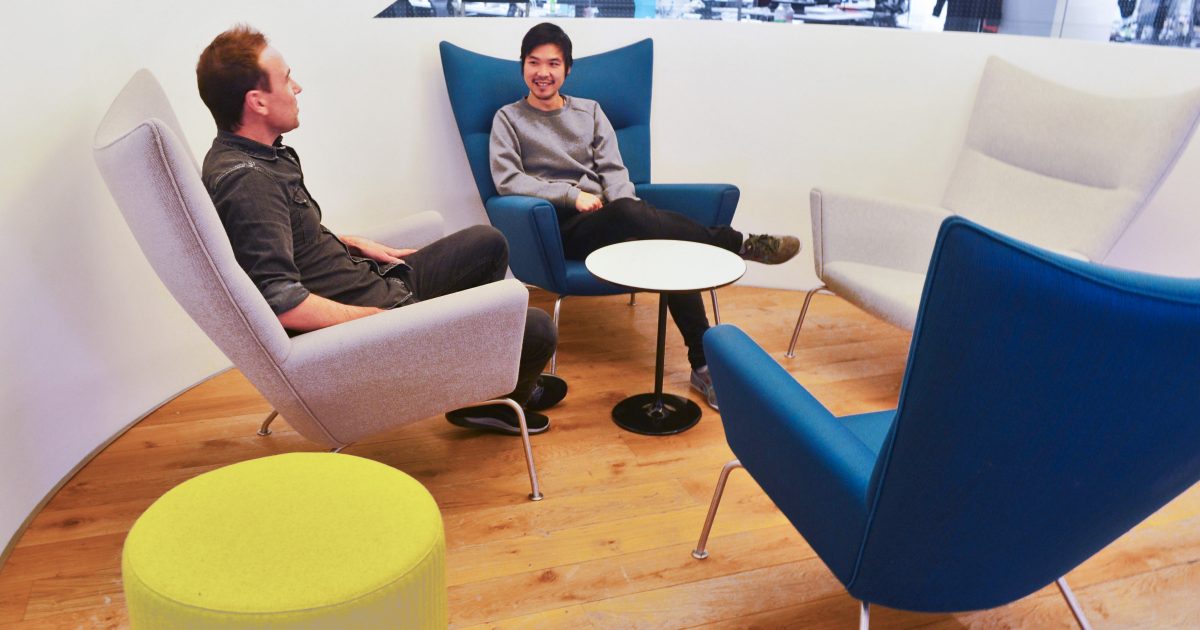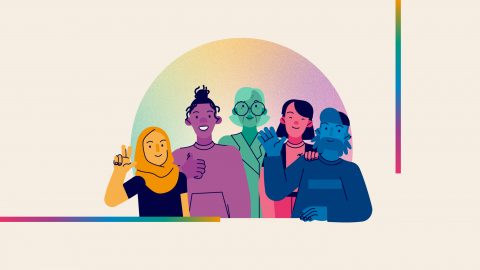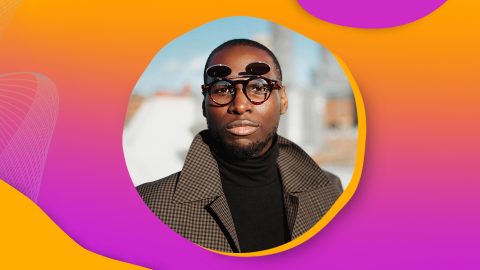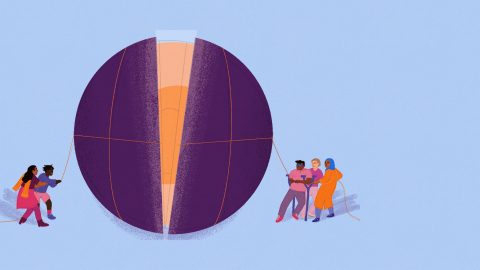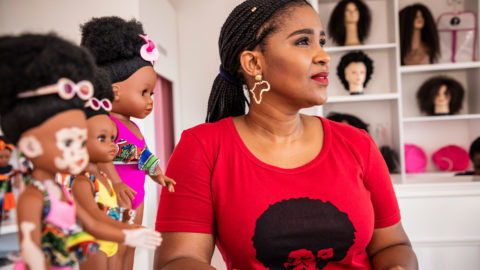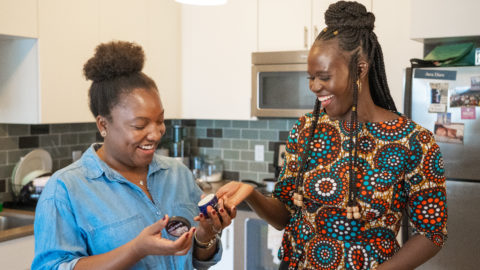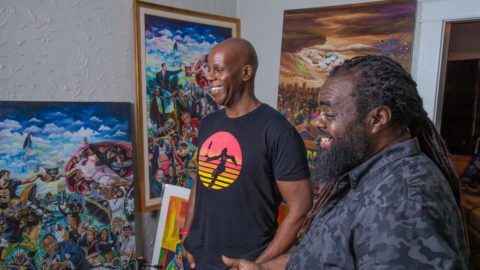Connecting people through the power of design
Skype’s UK-based mobile design team shows how your work at Microsoft can reach millions
For Richard West, the best part of working for Skype is knowing what he does helps people around the world, from school children who can connect with students in other countries, to ailing patients who can get doctors’ advice without leaving home.
And for designers like him, there’s likely been no better time to work at Microsoft. The company’s cross-platform strategy and boundary-pushing emphasis on design mean he’s been able to create a new Skype app for iOS that’s used by millions — and that the possibilities for those seeking a career in design are nearly endless.
-
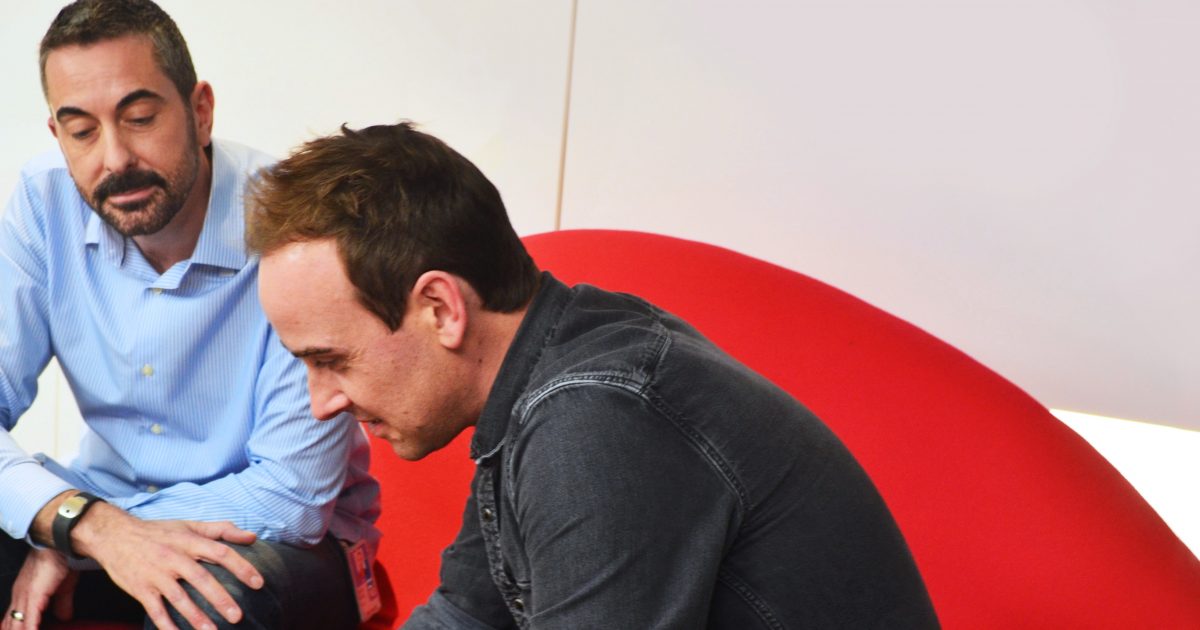
“You have an amazing opportunity to help shape and define the products and tools that millions of people use every day,” West says. “From a design perspective, there are great opportunities to be involved in the creation of new tools and services that are available to every person on any device.”
As interaction designers for the Skype Mobile design team in the U.K., West and colleague Soramist Chintanamanus were faced with a challenge more than a year ago: The Skype apps for iPhone and iPad weren’t getting great feedback. The navigation model wasn’t familiar to iOS users, and needed a visual refresh as well.
They set out to strike a balance, Chintanamanus says, “to make a product that is familiar to iOS users but keeps the identity of Skype.” They would make it simpler and more intuitive, as well as zero in on and eliminate anything that was getting in the way for users.
They worked hard to make sure the new interface made it easy to discover Skype’s many useful features. A key part of the project was to replace the separate existing apps for iPad and iPhone with a universal app that would make all future updates immediately available for both devices.
They brought their designs to a team that created prototypes to be tested in the in-house usability lab and continued to look for ways to improve and refine.
Getting the chance to design something that so many people will use “is quite a privilege,” Chintanamanus says.
It’s also part of the challenge — to make sure it works easily and effectively for people of all ages and levels of technical ability all over the world. Successfully doing that, West says, makes the work all the more satisfying.
Microsoft released the app last September. Being able to ship a product that involves so much thought and creative energy, especially one that will be in so many people’s hands, has been “the most exciting time in my career,” Chintanamanus says.
They watched the App Store eagerly for the app’s initial ratings, which averaged more than four stars out of five. It was a rewarding feeling “to know we were moving in the right direction,” recalls Dave Jones, who oversees all desktop and mobile clients as principal design director for Skype Consumer. “It was just great to see the feedback and how much customers were liking the redesign.”
Jones says the project is just one example of why he came to work at Microsoft years ago. He wanted to work for a company that could “affect change in the world” and remove the barriers to technology for many.
“When I look at the development of computers of the past 20 or 30 years, we have gone from command-line input, where only experts could use a computer, to simple graphical and touch interfaces that are more friendly and allow even my 72-year-old mum to understand and use them,” he says. “That, to me, is the power of Microsoft — and why I joined.”
Jones says opportunities to design Microsoft products for other platforms such as Apple and Android only increase the number of people your work can impact because many use a mixed bag of devices – maybe a PC at work, an iPad at home and an Android phone.
“We want to connect our customers, and we know people choose different platforms for different reasons,” Jones explains. “But it doesn’t matter which platform they choose, they’ll get the best of Microsoft anywhere.”
Microsoft’s cross-platform focus increases both the breadth of the company’s career opportunities and the variety of projects that designers can take on.
“For a lot of the work we do, increasingly so now, you don’t necessarily see a design in isolation to the platforms that you work on,” West says. “It’s actually seeing how that’s going to work across many different platforms.”
West, who earned degrees in both history and information systems before getting a master’s degree in human computer interaction, says Microsoft gives designers the free rein to explore their own ideas and turn them into reality.
-
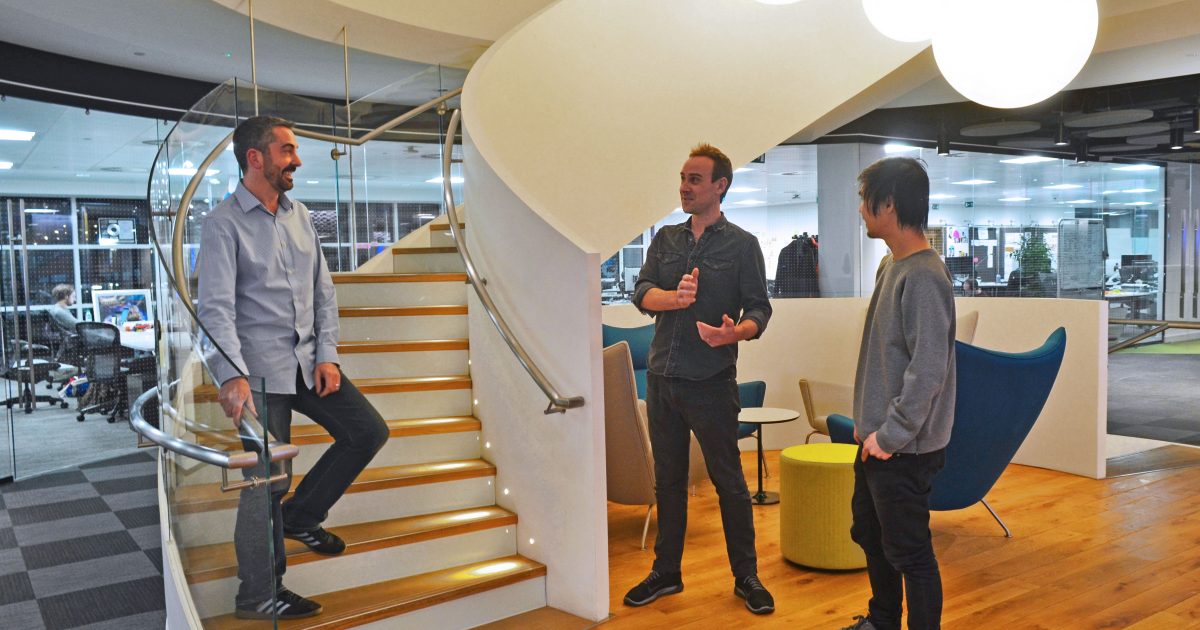
“You’re given that scope to go and design for the high-volume, highly used products,” he says. “It’s what probably every designer dreams of.”
Microsoft has long been seen as a very engineering-focused company, but that’s simply no longer the case, according to Jones. “Design is key to everything we do,” he says.
So what does it take to land a career in design at Microsoft? Jones says he looks for people who have a lot of passion for both technology and communication. People who think differently and have the ability to “shake things up,” and help the team look at the products it’s designing in new ways.
He also looks for people whose work is “really moving the needle.”
He says Microsoft is a place where the brightest minds in the industry are collaborating to bring the best possible products to customers. It’s also an employer that offers the unparalleled chance to make an impact on the world through technology that billions of people use.
“I’ve not found any other company that’s been able to do the things that Microsoft can achieve … and it’s just a really great working environment,” Jones says. “Microsoft is a great place to develop your design career.”



